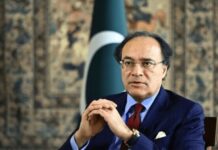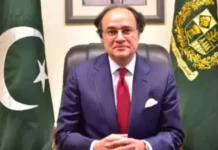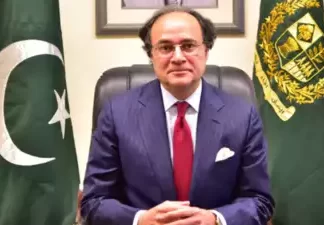KARACHI: At a briefing given to journalists a few days ago, the World Bank’s senior macroeconomist Derek Chen provided a sobering statistic: the federal government is spending almost Rs 328 billion a year on ministries that should rightfully have no need to exist.
At a time when the country is facing serious economic challenges and is strapped for cash, it boggles the mind why such spending is continuing. The answer lies in the continued failure of successive governments to effectively give power to local governments over the past 15 years.
The 18th amendment and local bodies
Here is what the WB’s criticisms come down to. In 2010, Pakistan’s parliament made the 18th amendment to the constitution which established a three-tier democracy in the country. Under this democracy, subjects such as health, taxation and education would fall within the provincial domain leaving the federal government more time to focus on things like defence, foreign affairs, and the economy.
The idea of any three-tier democracy is that small local bodies (union councils and tehsils in Pakistan for example) take care of everyday matters such as sanitation and healthcare while provincial and federal legislatures are able to focus on bigger picture issues. While power has still not been devolved to local bodies (a larger issue that Profit has covered before) there continues to be federal involvement in provincial subjects such as health and education. And that has a serious economic impact.
Read more: The great local government gambit
Not only has the federal government continued to spend money on what provinces should be spending on, that trend has actually been on an upwards trajectory. According to the World Bank, spending on devolved subjects stood at 0.39% of GDP in 2009 and increased to 0.59% in 2022. As a result, the non-devolved federal expenditures could not benefit as much as their share improved slightly to a mere 10.37% in 2022 from 10.13% in 2009.
Derek Chen in his briefing noted that in the fiscal year 2022, the HEC spent around Rs 70 billion. Moreover, Rs 315 billion or so from the federal Public Sector Development Programme (PSDP) funding also goes to provincial development projects.
The local bodies issue
When the 18th amendment was passed in 2010, matters such as health and education were made provincial subjects the understanding was that in due time these powers would be further devolved to a third tier of government – locally elected city, district, and tehsil representatives.
Before the 18th amendment, the only serious effort at forming this third tier of government had been made in the Musharraf era. After it, the first time was when the PML-N government in Punjab and the PTI government in KP tried to form local governments in their respective provinces after coming to power in 2013. The PML-N passed a very basic Punjab Local Government Act in 2013. The Act allowed larger issues such as health and education as the responsibility of the government through District Commissioners. But it did not guarantee or lay out the process of gaining funding.
Following the next government of Imran Khan, the PLGA 2019 was passed. This time it was a bit more clear, guaranteeing a 30% provincial budget to provinces through the Punjab Finance Commission. The Act also introduced elected mayors and more control of more subjects but the main areas, such as health and education, remained with the provinces.
But the act was short-lived. Just when the PML-N came back to over in 2022 a newer version of PLGA 2022 was launched. Very simply it goes as: Nine Municipal Corporations will be created in the largest cities, namely Lahore, Faisalabad, Multan, Gujranwala, and Rawalpindi. These cities will have a three-tiered local government system, of which the basic building block will be Union Councils which have been restored. A similar system has been set up for other cities and divisional headquarters, with an overall 234 Municipal Committees being set up for all cities with populations between 25,000 to 250,000.
But there is a difference between planning and implementing. Although with each new addition, the structure of third tier local bodies has gotten clearer, the stats of revenue and spending show a different picture. In an earlier conversation with Dr Vaqar Ahmad, an Islamabad based development economist, Profit learned that a lot of the financial crunch is owed to delay from provinces. “The multilateral banks such as the ADB and World Bank have promised program financing of almost $10 billion but it’s not following through because there is delay from the provinces in preparing the prior conditions.”
Moving forward
The federal government continues to engage on devolved subjects through semi-autonomous bodies that focus on devolved service delivery areas, such as the HEC and the NCHD. These institutions can be completely devolved to the provinces. In addition, there continues to be significant federal development spending on devolved areas.
The bank suggests an immediate refocus of federal development spending in the provincial domain, which will spring up savings to Rs 315 billion, or 0.5% of the GDP in FY22. However, the only real solution to this continued duplication of effort and waste of resources is to legislate empowered local bodies and hold elections for this third and vital pillar of democracy.
























Thank you for sharing a very meaningful article, I think it will be very helpful for me and everyone.